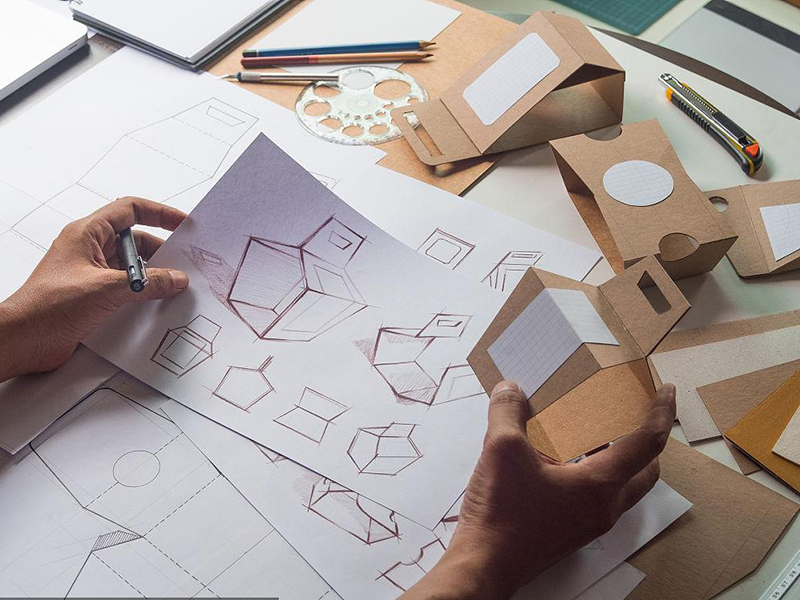Products packaging is the first physical touchpoint between your brand and your customer. Even if your product is excellent, poor packaging can instantly cheapen the experience, reduce trust, and hurt your sales. Customers today don’t just “buy a product”; they judge the entire presentation—from the look and feel of the box to how easy it is to open.
Below, we’ll cover seven common mistakes brands make with packaging, why they matter, and what you can do to avoid them.

01. Using Low-Quality Materials That Break Easily
The Problem:
Thin cardboard, low-grade paper, or poorly finished surfaces often bend, scratch, or tear during shipping and handling. Customers perceive these flaws as a reflection of your product’s quality.
The Fix:
- Use rigid board or thicker paperboard for premium products.
- For sustainability-conscious markets, switch to FSC-certified paper or kraft paper that is both eco-friendly and durable.
- Don’t underestimate the importance of protective inserts—cardboard, molded pulp, or foam trays keep fragile items safe.
💡 Pro Tip: A packaging sample drop test can reveal if your materials are strong enough to survive real-world logistics.
02. Overcomplicated Designs That Confuse Customers
The Problem:
Too many colors, busy graphics, or excessive fonts make packaging look cheap and cluttered. Instead of strengthening your brand, it weakens recognition and professionalism.
The Fix:
- Stick to a limited color palette aligned with your Pantone or CMYK brand colors.
- Use a single premium finish (e.g., foil stamping or embossing) rather than piling multiple effects.
- Place your logo and tagline where they are instantly visible.
💡 Pro Tip: Luxury brands like Chanel or Apple rely on minimalistic packaging because simplicity communicates confidence.
03. Ignoring Practical Functionality
The Problem:
Packaging that’s hard to open, falls apart after one use, or doesn’t protect the product frustrates customers and leads to complaints or returns.
The Fix:
- Choose structural formats like magnetic closure boxes, foldable rigid boxes, or drawer boxes that balance function with style.
- Test packaging by letting people outside your design team unbox it—fresh eyes reveal usability problems.
- If you ship internationally, account for humidity, stacking, and handling stress.
💡 Pro Tip: Add small details like pull-tabs, ribbon handles, or resealable closures to make the customer’s experience smoother.
04. Inconsistent Branding Across Products
The Problem:
If your lipstick packaging looks totally different from your perfume packaging, customers may not connect them as part of the same brand family. This dilutes your brand identity.
The Fix:
- Develop a brand packaging guideline with clear rules for logo usage, typography, and color schemes.
- Standardize finishes—e.g., always use gold foil logos or soft-touch lamination across product lines.
- Ensure suppliers stick to Pantone standards to avoid color mismatches.
💡 Pro Tip: Keep a swatch library of your approved colors and finishes to check production consistency.
05. Neglecting Sustainability (When Customers Expect It)
The Problem:
Eco-conscious consumers are quick to judge excessive plastic or non-recyclable packaging. It can even stop them from buying.
The Fix:
- Use recyclable paperboard, soy-based inks, or biodegradable films.
- Add a small printed note such as “Made with FSC-Certified Paper” to highlight your eco-friendly commitment.
- Reduce unnecessary layers and focus on smart structural design to cut material waste.
💡 Pro Tip: A simple eco-message on your box not only reassures customers but also strengthens brand loyalty.
06. Overlooking Printing and Finishing Quality
The Problem:
Off-center logos, color inconsistencies, or scratches on finishes can ruin the premium look of your packaging. Customers may assume the same carelessness applies to your product.
The Fix:
- Work with experienced printers who specialize in luxury packaging finishes like scuff-free varnish or soft-touch lamination.
- Always request a printed proof or prototype before mass production.
- Inspect bulk orders with random sampling to maintain quality control.
💡 Pro Tip: Keep backup printing files with exact CMYK values to avoid “surprise shades” in reprints.
07. Forgetting the Unboxing Experience
The Problem:
If your packaging feels generic or forgettable, you miss out on free marketing opportunities—customers won’t post or share it online.
The Fix:
- Add small delight factors: branded tissue paper, thank-you cards, or hidden compartments.
- Consider a layered unboxing experience, where each step reveals something new.
- Customize interior printing to surprise customers even after they’ve opened the box.
💡 Pro Tip: Social media unboxing videos are one of the cheapest ways to generate organic brand awareness—design for that moment.
Important
Packaging mistakes are more than cosmetic—they directly impact customer perception, brand loyalty, and repeat sales. By focusing on material quality, consistent branding, sustainability, and the overall unboxing experience, you can transform packaging from a cost center into a revenue driver.
When done right, packaging doesn’t just protect your product—it becomes part of the product itself.
Looking to upgrade your packaging and avoid these costly mistakes?
At Long Green Pack, we specialize in custom paper packaging that combines premium materials, sustainable solutions, and professional finishes tailored to your brand.
👉 Contact us today to discuss your packaging project and see how we can help you create packaging that truly elevates your brand.



